
The Hallyu (Korean wave) that swept many cities the past years not only brought about the fame of Korean culture, K-dramas, and K-pop, it brought along the popularity of Korean cuisine, too.
We used to just refer to their grilled meat as Korean barbecue, which when viewed might be like your normal barbecue day anywhere. But no, gui (grilled dish)/ Korean barbecue includes thinly sliced meat (beef in particular) that has been marinated in a sweet-savory sauce.The meat slices are cooked on a pan griddle/stove-top on low heat. If you prefer pork, the leafy greens, banchan (side dishes), and the sauces and oil comes served so you can wrap up your meat in a burst of flavor and your choice of side dish. There are also restaurants that offer non-marinated meat, of both pork and beef variations.
We tried the newest Korean restaurant in Vienna, Babida the past week and weren’t disappointed. Although opened in December, the place hasn’t gain traction and fame yet despite serving affordable and yummy dishes, having friendly staff, and is in an easily accessible location.
Visiting Babida transports you to a usual Korean restaurant, with a homey interior that’s usual in local Korean restaurants. (This interior can often be seen in Korean dramas, too). Read along to learn how Korean barbecues differ from your usual grilling traditions. (That is, if you are not Korean, or not a fan of Korean culture.) This is not a guide to eating Korean barbecue but I hope you get some good tips.

Table of Contents
Choice of Meat at Babida
I’ve always favoured buying Korean meat because of the way they’re sliced – really…really thin. That’s both for bulgogi (literally “fire meat”) and samgyeupsal (grilled pork belly). There are still a handful of meat cuts used for Korean barbecue but let’s focus on a few.
Babida serves galbisal (rib / beef meat from ribs), samgyeupsal, and Deungsim (sirloin) for their barbecues.
Beef
Galbisal
Galbi means rib and when used in Korean barbeque mean beef short ribs. If it’s pork then it is labeled as such (dwaeji-galbi). Galbi cuts are usually with a bit of bone at the end. But galbisal is just beef rib meat – easy to chew as they’re boneless. Unlike other restaurants where they serve meat grilled already, you grill on table stove by yourselves. This gets your meat cooked the way you want.
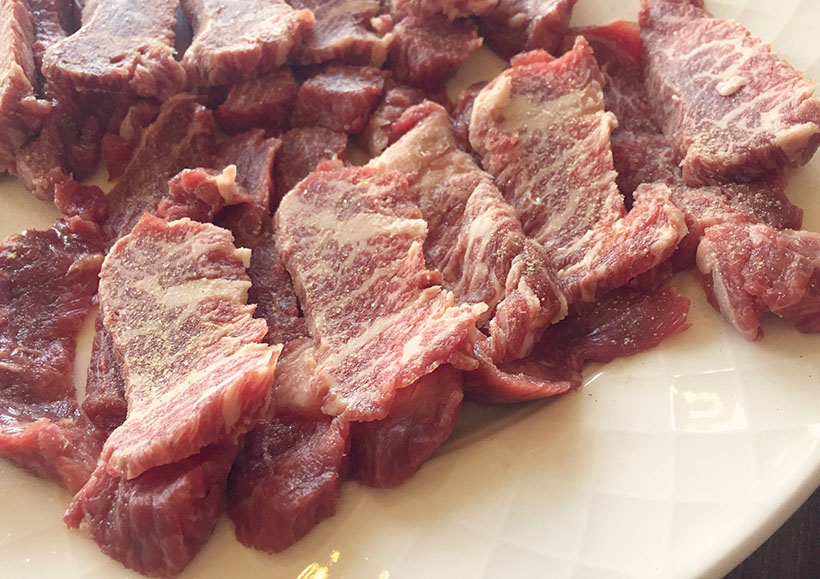
Our cook during our last visit was kind enough to grill for us. He explained that galbi shouldn’t be cooked too much, but we prefer it medium/cooked through. It turned that leaving the meat some more minutes made them easier/softer to chew that way, with an almost melt-in-your-mouth consistency. Could be since the meat cut is thicker than the usual bulgogi, nonetheless, it was tasty as is.

Deungsim
Deungsim, simply put is sirloin. We have yet to try this but I’m pretty sure sirloin would be much more tender.

Pork
Samgyeupsal (Pork Belly)
Probably the most loved on every grill session is pork belly meat. They’re not as expensive as beef and cooking time can be shorter as well. Without marinate, pork belly meat tastes real good with grilled sliced garlic, grilled sliced ring onions, ssamjang (chili paste and soy bean paste), and wrapped in lettuce (ssam).
The meat are usually served as a whole cut, you can cut them into smaller or bite size pieces later on. This makes wrapping them easier, also makes meat easier to cook through the cut sides. (Note: in photo should be austrian cut pork belly.)
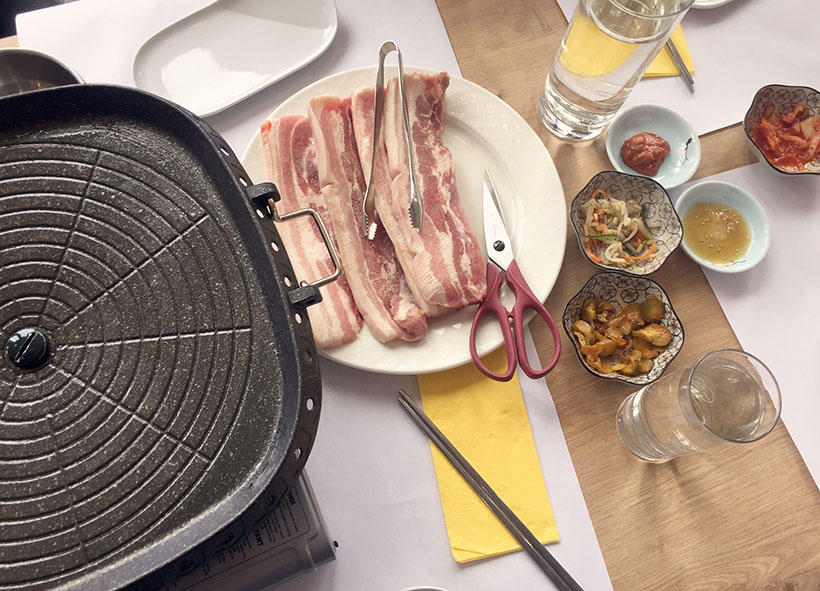
Grilled pork belly also goes well with heungmi-bap or the red/purple rice served with the barbecue. If you are on a low-carb diet, you know that eating the meat alone would satisfy you all throughout the day.
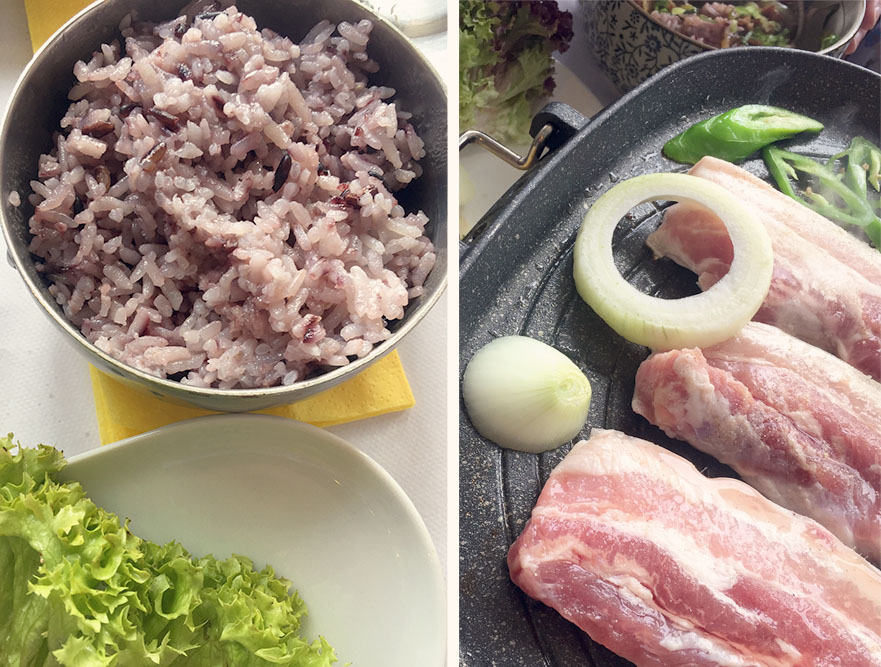
Seafood
Fish
Well fish is not available for grilling but they serve a crunchy mackerel dish (Japanese style) which may be too salty for your taste. Growing up eating this, I finished all 4 pieces, that’s a whole fish minus the head!
Squid and company
Seafood is not on the grilled menu, yet. But, they offer seafood soups (info below) and even Jeongol – the equivalent of hotpot.
Way of Cooking and Eating
As mentioned, Korean barbecue restaurants do not serve cooked meat, you cook on a stove provided. Servers would demonstrate how the stove works. And you can start grilling if you feel like the pan griddle is hot enough already. You can throw in the garlic and onion slices, bit of chili to taste.


Side Dishes, Sauces, and Rice
Korean meal spreads are always colorful. Given the side dishes, sauces, and leaves, it’s bound to be a burst of hues. (See top photo). Some of the food served with Korean barbecue are as follows.
Rice
Heungmi-bap is mixed white rice and black rice that yields a color of reddish/purplish but really yummy rice. Each person on a table usually gets a rice serving in the usual Korean container, a covered stainless steel bowl.

Side Dishes
Kimchi – the usual fermented napa cabbage
Kongnamul – boiled bean sprouts with sesame oil
Oiji – pickled cucumbers
Sauces
Gireum-jang – Sesame oil, salt, pepper, and sesame seeds
Ssamjang – chili paste, and soy bean paste

Other Yummy Korean Dishes
Dolsot Bibimbap (hot stone pot bibimbap)
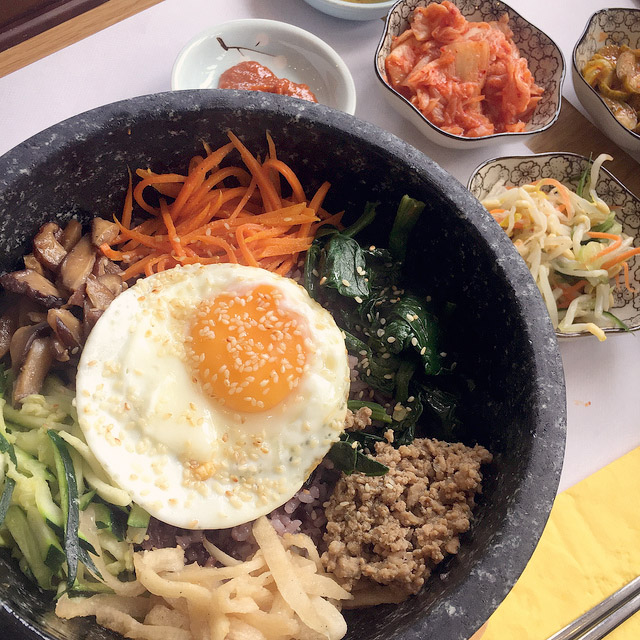
Bibimbap (the cold version of this rice dish) is a mixture of marinated meat and vegetables such as mushroom, carrot, spinach, cucumber, bean sprouts over rice. It is one of the easy dishes I cook at home, here’s one recipe I follow.
And because dolsot bibimbap is served on a hot stone pot, it would be hot even after eating for 30 minutes. The rice under might stick. For this reason, it is best to mix the dish – bibimbap means mixed rice after all.
Bulgogi Dupbap
Dupbap/Deopbap means covered rice, like the Japanese don. Bulgogi is the most easily recognizable Korean dish. It’s mostly thinly sliced rib eye, or sirloin marinated in soy sauce, rice wine, sugar, sesame oil, garlic, Asian pear. The meat slices are grilled over charcoal or pan-grilled. Vegetables in the mix include carrot and sweet onion.

Samsun Jjamppong
Samsun Jjamppong is spicy seafood noodle soup. The soup base is usually red because of chili powder, thus the spicy flavor. It is best eaten after servings of barbecue but is also good on its own.
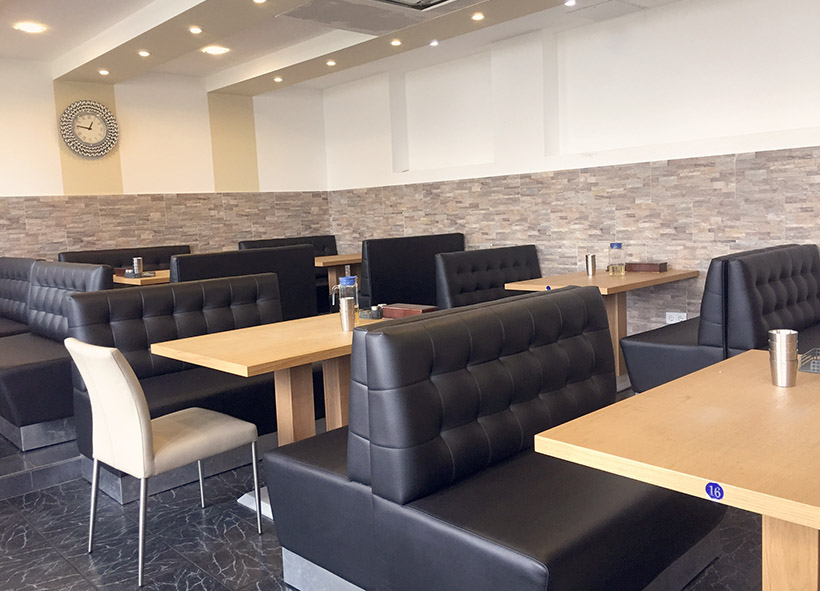
While I haven’t dined for dinner at Babida yet, we haven’t tried their soju offerings. We’ve always had the usual drinks. Maybe soon we’ll go for dinner. And I’ll definitely update this post by then.


Babida is located near the train station Schwedenplatz, at Franz-Josefs-Kai 29, 1010 Vienna. It’s just a few minutes walk from the old town, which you can explore after a hearty, energizing meal.

|
|
|
--------------------------Book your Vienna stay here!--------------------------

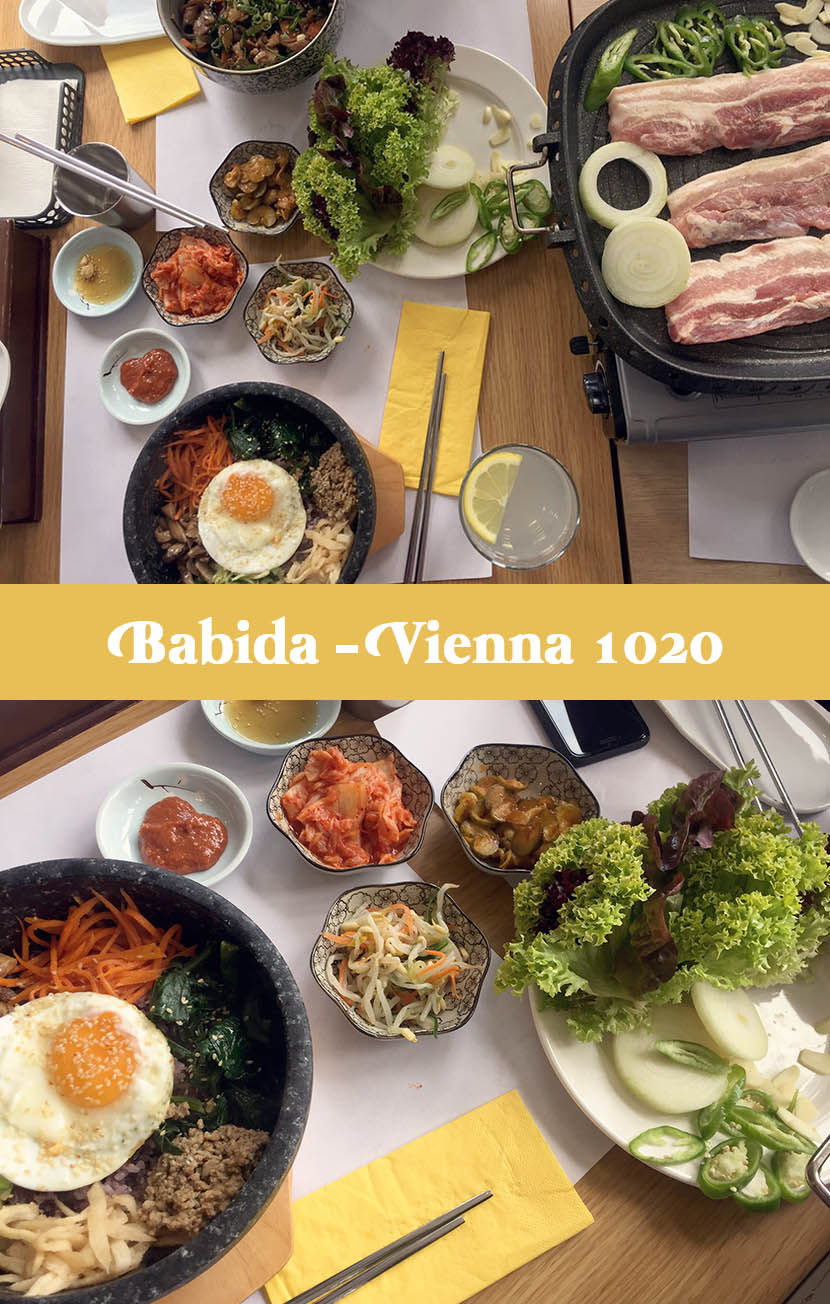
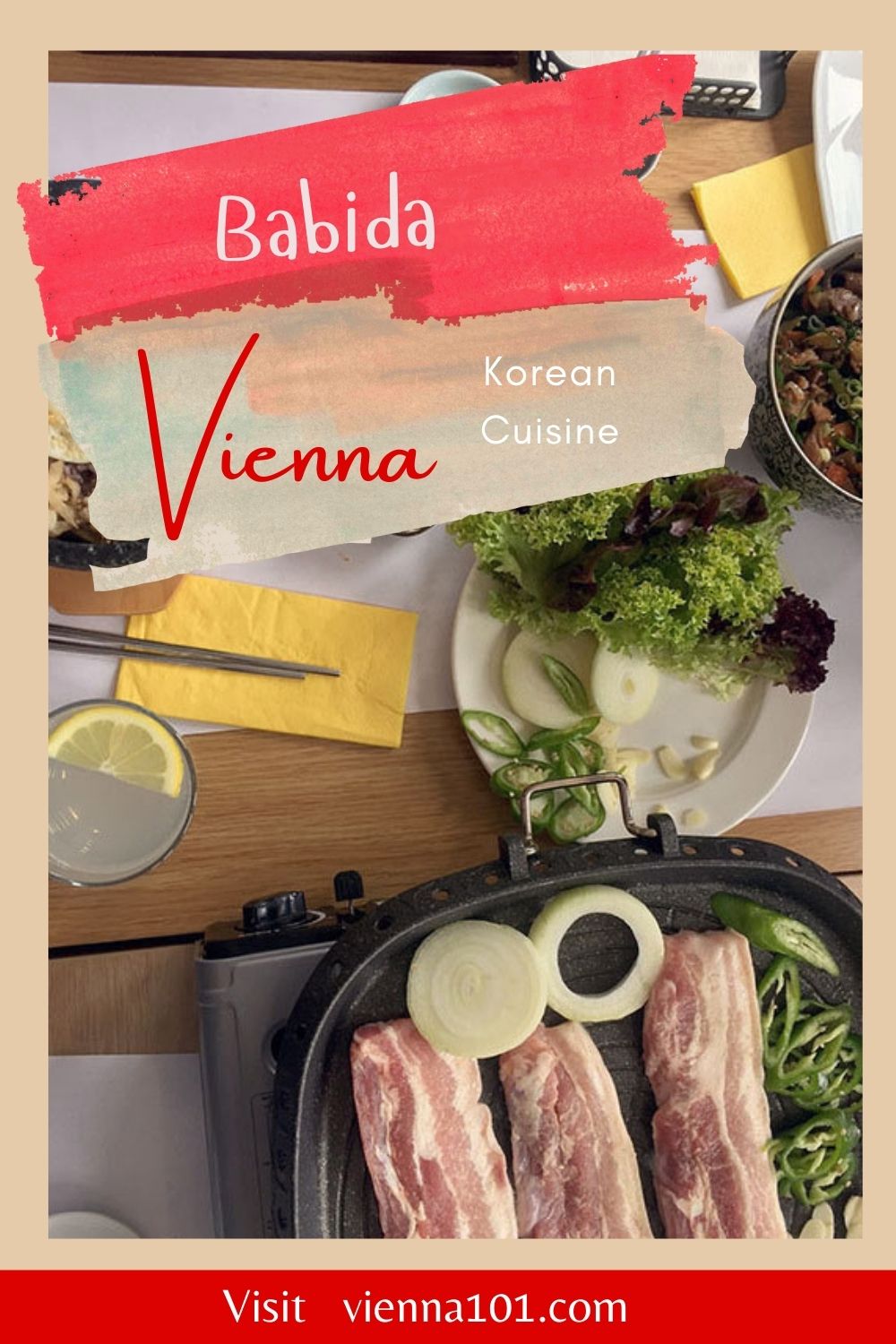

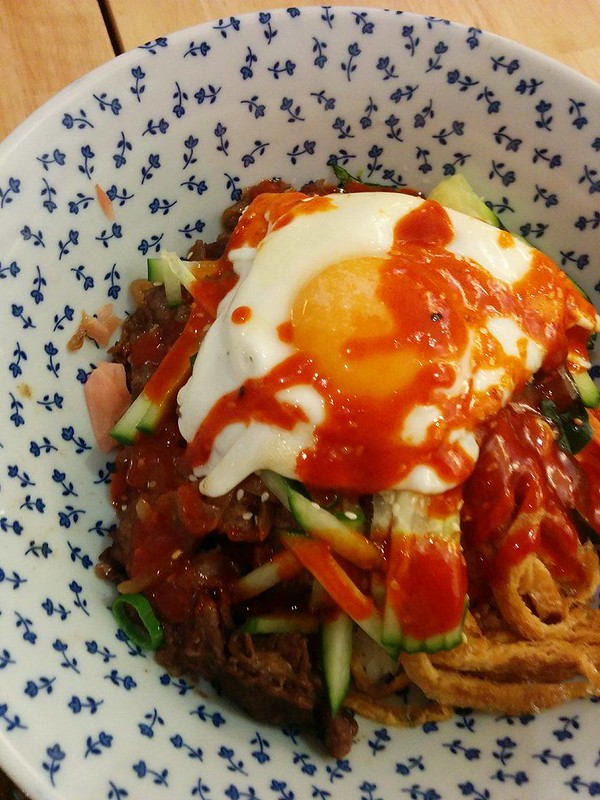
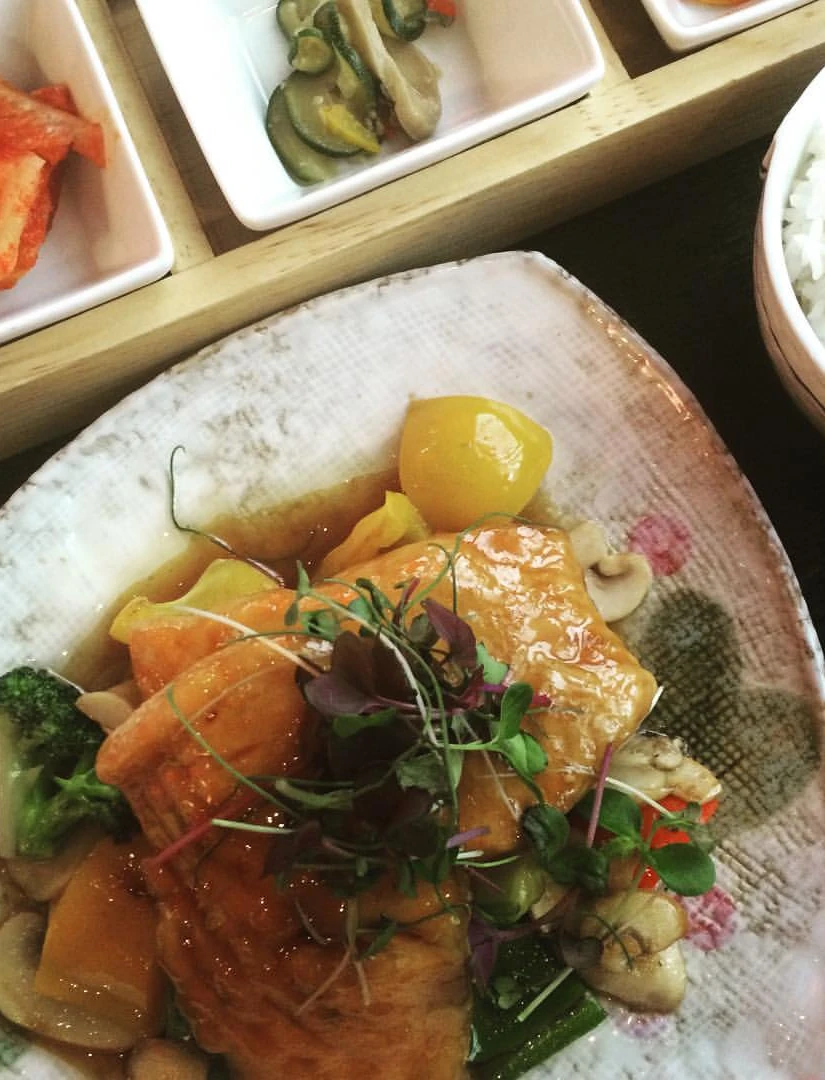
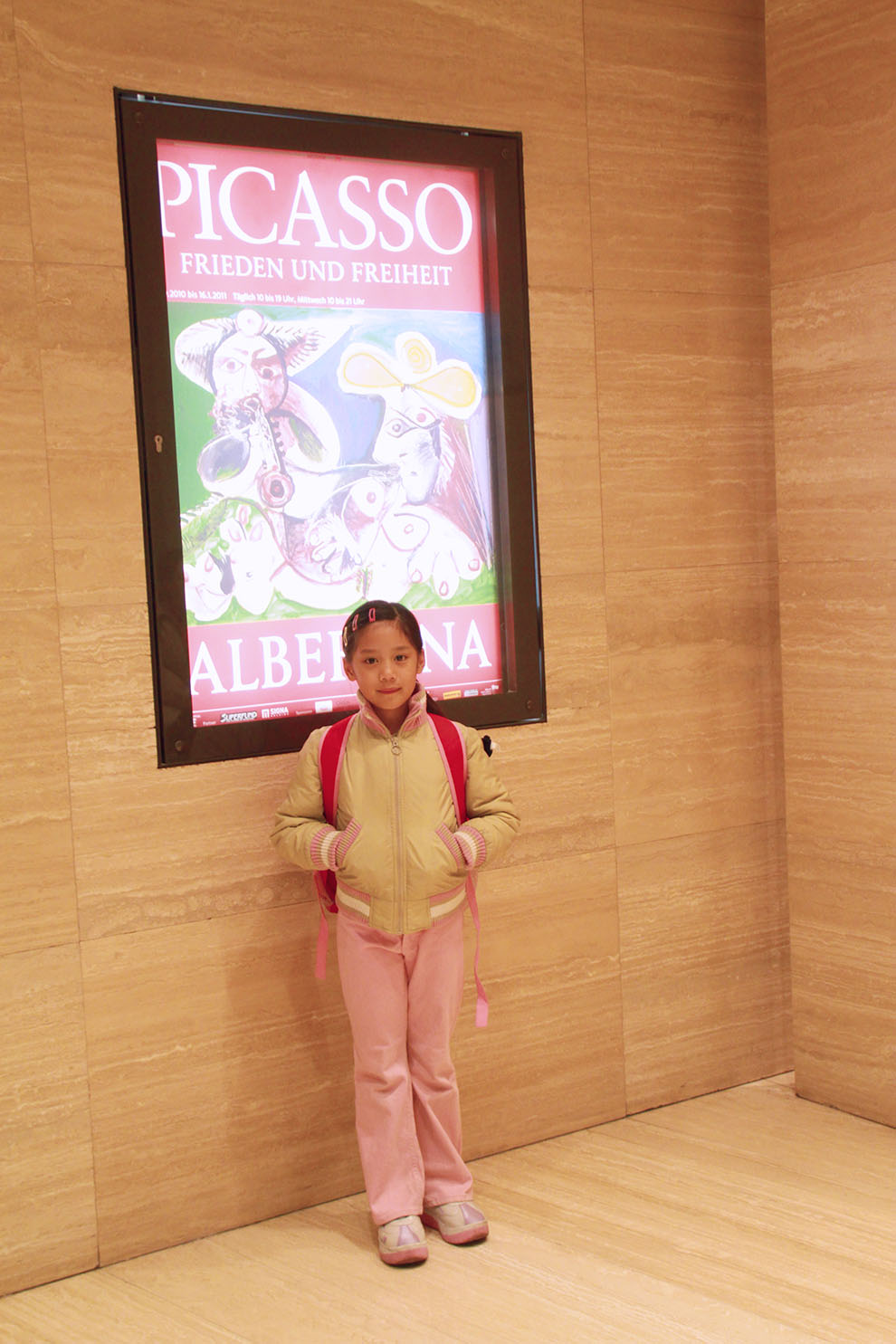
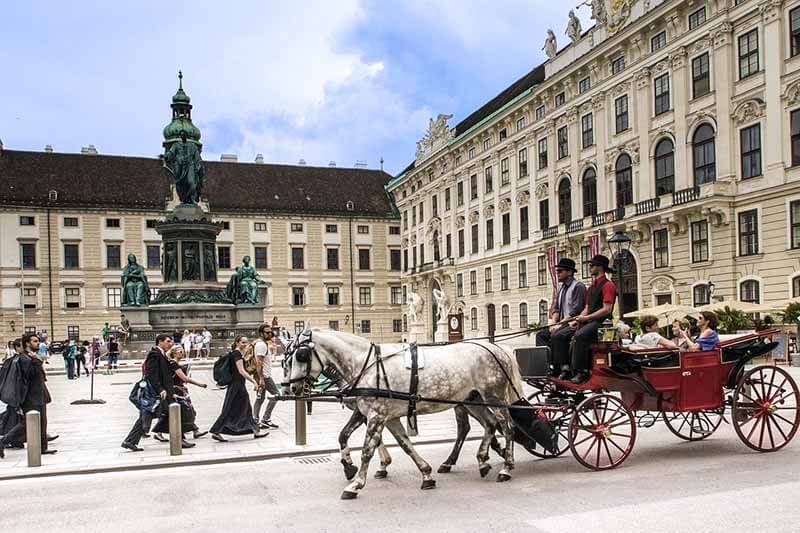





Babida looks wonderful! I got more into Korean food from 2015 when I took up a job in New Malden, a little way outside of London to the south east. It’s known as Little Korea for the expat Korean population and there are a lot of Korean restaurants, so I ate Korean food for lunch at least 3 times a week. Loved working there for that reason alone!!!
There’s a great Korean BBQ near where Simon lives – but I’ve never really known what to do. Now I have much more of an idea – and if I happen to be in Vienna I’ll try babida too.
Ahh I am such a huge Korean food fan and sadly there aren’t many good restaurants here in Bristol. Love love love everything here. If you want to try cooking it at home, I’ve got a few recipes on the blog!
Ang sasarap nung mga meat! Masarap mag soju habang nagsasamgyup huhuhu